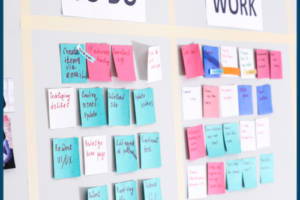
What I Learned From Being a Time Sleuth
What do you do when you have to get something done in a short period of time?
Recently, I was in this situation. On February 15th, I decided to create a resource called How to Easily Knock Everything Off Your To-Do List. It needed to be available for download via my website no later than March 3rd. This is a pretty quick turn-around time for a robust report.
I write a lot and I know my subject, so you might think I could at least get a rough draft done in a few hours.
You would be wrong.? Between my desire to share knowledge with people and wanting to do an excellent job.
I followed my regular process of creating a basic outline, while adding specific thoughts as they came to me. Then I looked at material I’d previously written to see if I could repurpose pieces of it.
This took several hours.
Then I spent an hour here and an hour there working on it. I was feeling pretty good about meeting the deadline ahead of time.
All at once it was March 1st! Not only did I need to finish writing it, I had to send it to my virtual assistant to “pretty it up.” After my approval, she’d have to format the webpage so people could download it.
In addition to this task, I had meetings to attend and other important activities – like sleeping and eating.?
Given the amount of work I’d already done on the material, I wanted to say that it would only take me an hour or so to complete it. At the same time, I knew that everything takes longer than I think it will.
So I decided to make an educated time guesstimate. Rather than doing one for the whole document, I decided to record my estimates by section. So I listed an approximation next to each of the seven parts to be completed. The total was three hours, which seemed like a huge overestimate! However, it’s better to overestimate then underestimate.
I started the timer for the first segment I wanted to finalize. I got excited when it took me 15 minutes when I’d predicted 30! I’d anticipated 15 minutes for two of the pieces and each took five minutes. I was on a roll!
I completed the next section in less time than my estimate. Then things went awry when I discovered that I’d underestimated time on the remaining parts.
Shockingly, it took two hours, 50 minutes to complete How to Easily Knock Everything Off Your To-Do List. Yes, 10 minutes less than my estimate, yet more than I really thought it would.
And yes, it still had to be sent to my virtual assistant.
So, what did I learn from this experience – besides the fact that it would have been better if I’d worked on it a bit more prior to March 1st?
- Making time estimates by section made the task seem more doable than if I’d done it for the documents as a whole.
- Using a timer for each part gave me a sense of urgency because I wanted to finish before the timer sounded.
- I could have utilized this guesstimate strategy in each stage of development: outline, draft, and final product.
- I’ll mainly employ the time estimate strategy for work that has a specific deadline. I know that if I used it every day, I would eventually abandon it.
I’d love to know your thoughts about using time guesstimates for task completion!
If you’ve used it, tell me how and whether or not it worked. If you haven’t tried it, let me know if you think you’ll give it a try. All comments are welcome; this is a no judgment zone!



